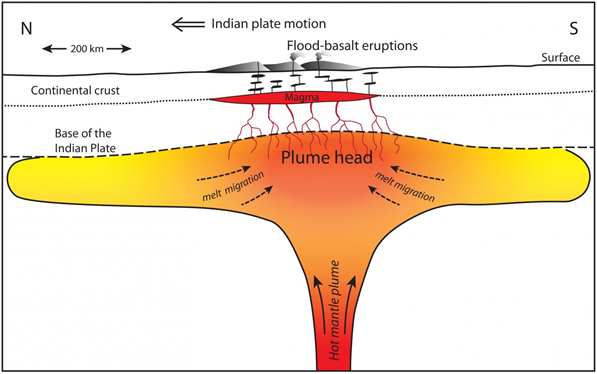High upper-mantle P-wave-speeds in the Hikurangi, Manihiki and Ontong-Java Plateaux: a finer-print of mantle flow in the head of superplumes?
Speaker: Professor Tim Stern
SGEES, Victoria University of Wellington
In this study we present seismic evidence for the existence of a distinct flow-fabric that we propose to be created in the head of mantle “superplumes”.
Oceanic lithosphere now subducting beneath North Island was once part of the world’s largest superplume: the Ontong-Java-Manihiki-Hikurangi-Plateau (OTJMHP). We show that common to all parts of OTJMHP are high P-wave speeds for horizontally travelling rays (i.e. the Pn phase) of 8.8±0.2 km/s at sub-Moho depths (~ 25-35 km). These speeds are unusual in that they are ~ 10% greater than normal and would normally be encountered at a depth of about 400 km. The high speeds were first reported by a VUW PhD student in 1984 (Kayal & Smith, 1984) to be present beneath the eastern North Island. We use the recent SAHKE data set to show that these high wave-speeds in the upper mantle also exist along a profile that is at right angles to the profile of Kayal and Smith. These observations are consistent with a strong radial anisotropy that we identify as an AG-fabric. In a structural sense the AG fabric represents uniform flattening with K=0 on a Flinn diagram. That is, vertical shortening with uniform dilatation in all horizontal azimuths to give the high Pn wave-speeds. Our interpretation of this fabric is that it is created by gravitational collapse in the head of the plume in its final phase of evolution.
If this analysis is correct, we can use the detection of these high wave speeds, in the upper mantle, as a finger print of ancient superplumes that may now be dispersed and fragmented across the oceans and continents of the Earth.
*This talk is based on paper in review by TS1, Simon Lamb1, James Moore 1,2, David Okaya3 and Katrina Hochmuth4
1= VUW, 2= Earth Observatory of Singapore, Nanyang Technological University, Singapore, 3=University of Southern California, LA, 4= Alfred Wegner Institute, Bremen, Germany

